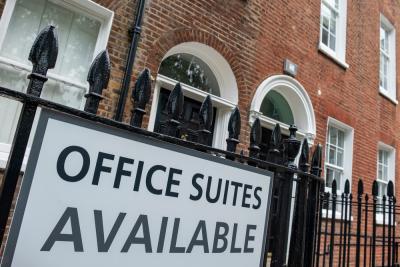UK national house price growth is on an upward curve, according to Carter Jonas. But it continues to slow with rates ranging between 1.5% and 3.5% for much of 2018 to date.
This compares unfavourably to an annual average of between 7% and 9% in the four years prior to 2017.
Carter Jonas’s findings – known as The National Housing Market report – aims to provide a ‘holistic insight into the UK residential landscape’ by assessing house prices, affordability and lending habits throughout the UK.
The latest report shows that, while the UK’s average house price growth indicates a positive picture for the market, deeper analysis exposes an ongoing juxtaposition between house prices in the north and south. There is buoyancy in the markets in the Midlands, the North, Scotland and Wales – with considerable growth in all these regions – which is keeping overall market trends steady but masking regional differences.
In some of the traditionally affluent regions, for example, there has been significant price moderation, with Prime Central London averaging a 6.7% fall in value over the past 12 months, while prices in Oxford have registered a 2.8% decline.
Following nearly a decade of consistent growth, a gap has now emerged between house prices and affordability. As wages fail to keep pace with house price rises, buyers are inevitably moving elsewhere in search of better value.
This could help to explain why house prices in more affordable parts of the UK are on the up. Values in the North West (5.3%), North East (3.6%), Yorkshire & the Humber (3.2%) and the West Midlands (3.1%) remain in positive growth, even if it is only single digit growth.
Northampton (with house price inflation of 6.5%) and Leeds (where prices are up by 5.7%) are two locations which have been experiencing standout growth.
When it comes to transaction volumes, there is also a significant difference in values between the north and the south of the UK. Comparing average monthly sales volumes in the periods January 2014 to February 2016 and April 2016 to February 2018, Wales (7.2%), the North West (5.3%) and Scotland (5.2%) have all seen a rise in transactions, while London and the South East have witnessed the largest falls of 21% and 10.2% respectively.
The UK, on an overall basis, has experienced a decline of 3.3% in transaction volumes, in part attributable to the ongoing Brexit negotiations (and the uncertainty this is causing) and various taxation changes.
“After a period of rapid house price growth in London and the South East, a slowdown was always inevitable – and arguably essential – to allow wages to catch-up and buyers to be able to finance their move,” Rory O’Neill, head of residential at Carter Jonas, said.
“The correlation between areas of affordability and an uptick in transaction volumes is a trend we should expect – particularly given that buyers are increasingly price conscious and brilliantly savvy about how best to make their budget work for them.”
He added: “Perhaps what is most shocking is the 35% decline in buy-to-let mortgages since the taxation levy was introduced in April 2016. The implication is that rental stock levels will fall into decline, placing greater pressure on a property market already constrained by lack of supply. For that reason alone, the Chancellor needs to consider whether Stamp Duty penalties are truly the right solution to resolving the housing crisis.”

















Join the conversation
Be the first to comment (please use the comment box below)
Please login to comment